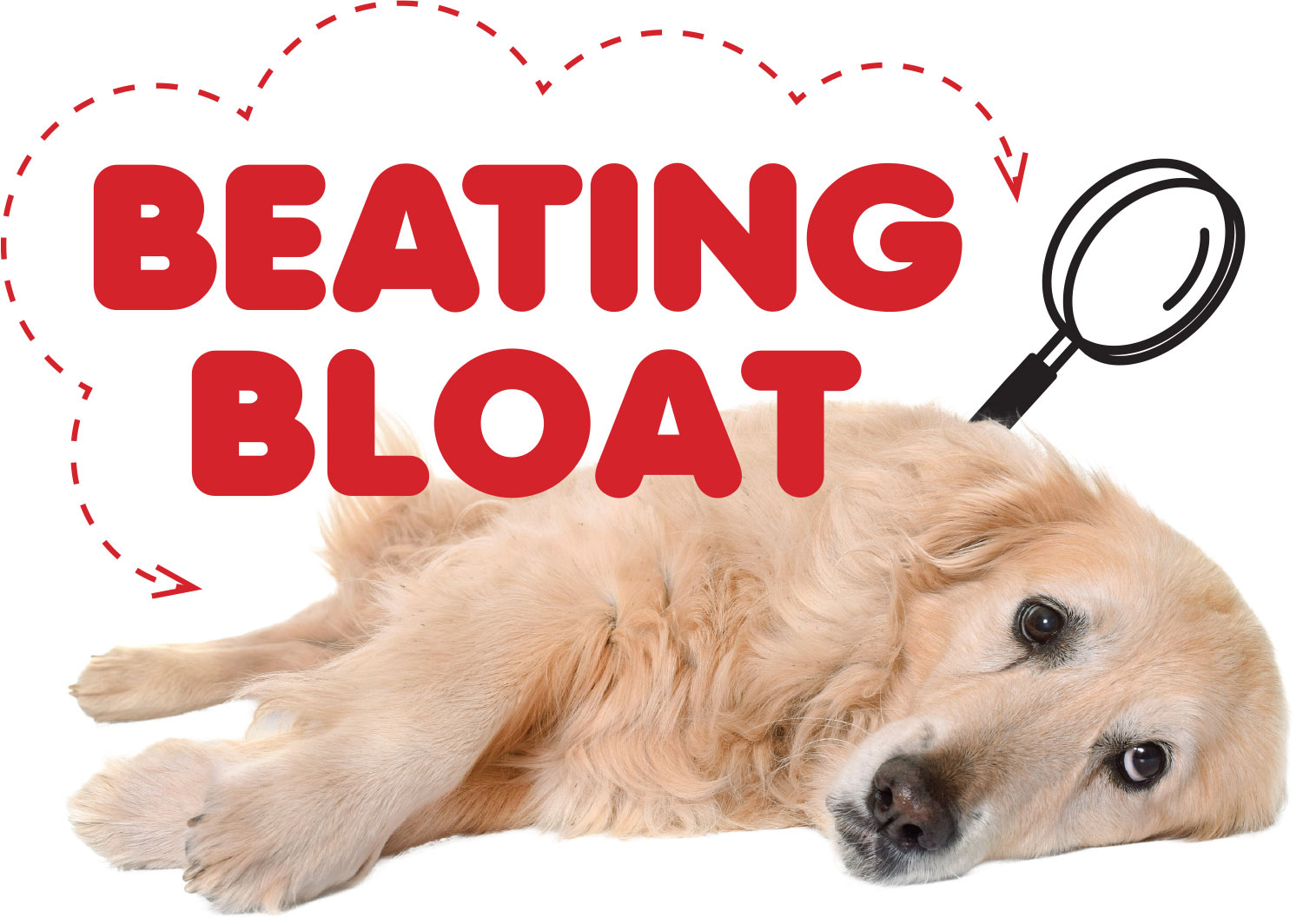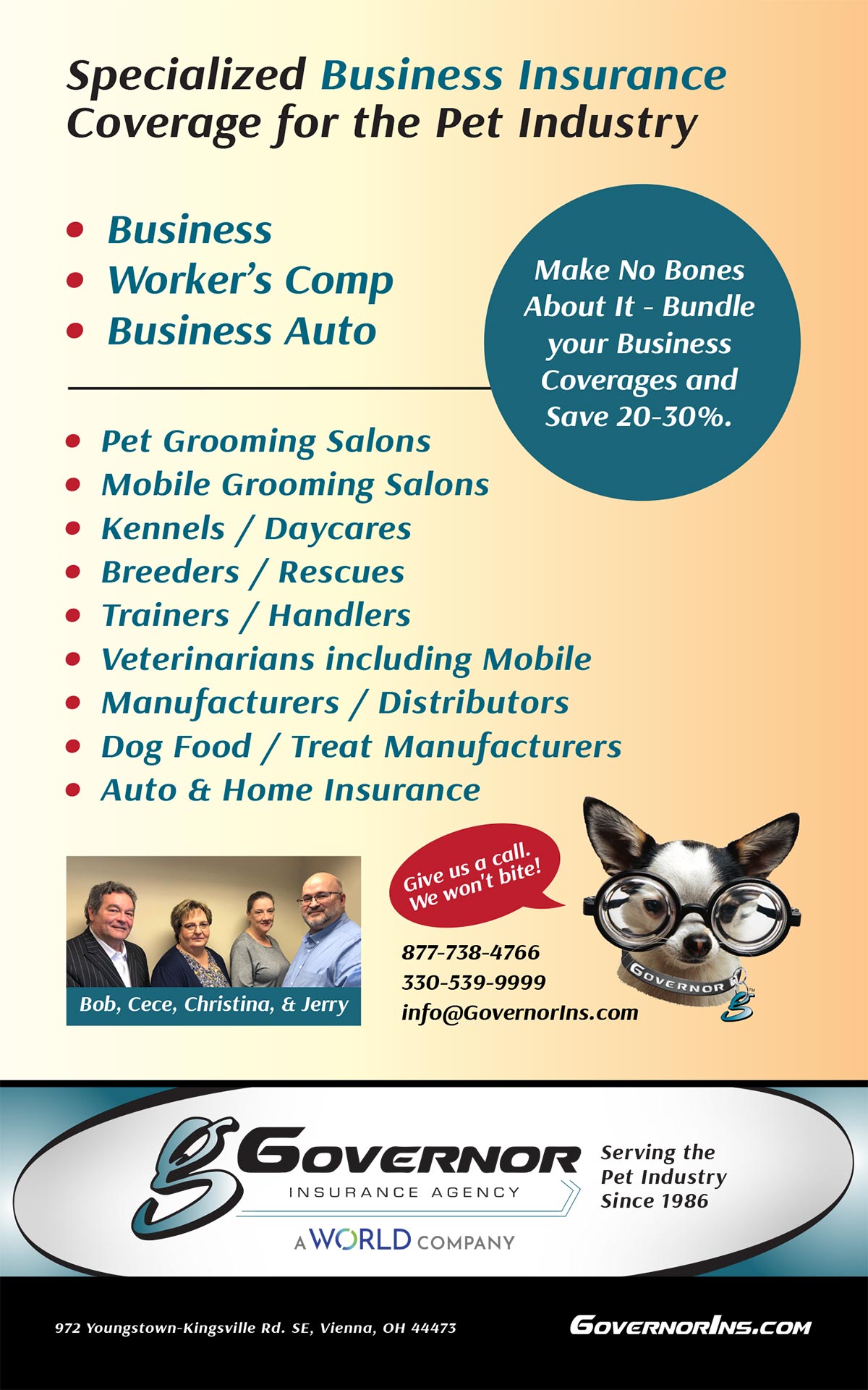Animal Health


By Arden Moore
 ne of the most overlooked and deadliest conditions to impact a dog at a boarding and daycare center is bloat.
ne of the most overlooked and deadliest conditions to impact a dog at a boarding and daycare center is bloat.
“Medically, veterinarians refer to it as gastric dilatation-volvulus (GVD), but emergency veterinarians refer to it as ‘the mother of all emergencies,’” says Dr. Mike LoSasso, a board-certified emergency medicine veterinarian who operates the Frisco Emergency Pet Care in Frisco, Texas.
The signs for bloat at first can be subtle. A dog may act lethargic or make retching sounds or salivate, but not vomit. In addition, the stomach steadily swells. With time, a dog’s heart may accelerate, gums may become pale, they may go into shock and their heart may stop beating.
“The stomach has not only dilated and gotten very big, but it has turned around on its own axis,” explains Dr. LoSasso. “It cuts off the ingress from the esophagus and the egress from the intestinal tract. Everything in the stomach stays in the stomach. The stomach stretches and it is very, very painful. It puts pressure on the aorta and causes a lot of cardiovascular compromise.”
In dogs suspected of having bloat, minutes count. Untreated, a dog can die within minutes to a few hours of developing bloat. It is estimated that about 60,000 dogs develop bloat in the United States annually, and of them, about 40 percent do not survive.
“Bloat is more common in deep-chested breeds in which their sternums are a long distance from their backbone,” he says. “We don’t ever see bloat in the square-chested dogs, like English bulldogs or most terrier breeds. I have seen bloat in a couple of small dog breeds. One was a Corgi and one was a Dachshund. Both are small breeds, but because of their deep chests, there is enough room for the stomach to actually move around.”

The first comprehensive medical study on canine bloat involved 1,914 dogs in the early 1990s at Purdue University’s School of Veterinary Medicine and was led by Dr. Larry Glickman, DVM, an epidemiologist.
Some of the key findings remain true today:
- Dogs who are nervous, anxious, fearful, or even aggressive are more at risk for bloat than dogs with even or happy temperaments.
- The long-held belief among some that elevating a dog’s food and water bowls would reduce the risk of bloat does not hold true. In fact, veterinary researchers found that raising the bowls off the floor doubles the risk of a dog developing bloat.
- Bloat is more prevalent in large breeds, with the risk steadily increasing after age five.
- Feeding a dog only one large meal of dry dog food a day can increase the dog’s risk for bloat. The stomach has a better chance of breaking down and digesting food when a dog is served two or three smaller meals a day.
“One week after taking a pet first aid class, one of my staff noticed a dog acting puckish in his kennel and that his stomach was swollen,” recalls Ash. “We immediately notified the dog’s owner, and we took the dog right away to the veterinary clinic where the dog was treated for bloat and survived.
To reduce the risk of bloat, Ash ensures that his staff follows this safety policy: All dogs are rested for at least one hour before they are fed. Then, the dogs are kenneled for at least an hour after eating, before they head into the common areas for play time or potty breaks. Dogs are not allowed to gulp up large quantities of water. Some dogs are fed in specially designed slow-feeder bowls or food puzzles that a dog must paw or mouth to release small bits of food at a time.
Dr. LoSasso shares this final tip: “If you notice the dog is getting fatter like every 15 minutes, that really is a problem, and we need to see those dogs as quickly as possible. Bloat is often over missed, so the more we can educate pet professionals and pet parents about the early warning signs, the better the survival rate can be.”
Arden Moore is known as America’s Pet Health and Safety Coach. A master certified pet first aid/CPR instructor, Arden is the founder of Pet First Aid 4U and director of education for Pro Pet Hero’s pet first aid instructor program. She teaches in-person and interactive classes all over the world. A Fear Free certified speaker, she is the author of more than two dozen pet books. She hosts the award-winning “Oh Behave Show” on Pet Life Radio and “Arden Moore’s Four Legged Life Show.” Learn more at www.ardenmoore.com and www.petfirstaid4u.com

